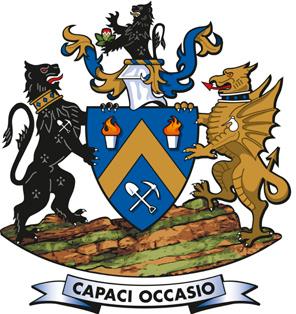
2 minute read
Stakeholder inclusion in the design and development of equipment for the modernizing mining sector in South Africa
from Saimm 202304 apr
by SAIMM
S. Ngobese1, J. Pelders1, W. Botha2, F. Magweregwede1, and S. Schutte1
Affiliation:
Advertisement
1CSIR Mining Cluster, Johannesburg, South Africa.
2Enterprises University of Pretoria, Pretoria, South Africa.
Correspondence to: S. Ngobese
Email: sngobese1@csir.co.za
Dates:
Received: 1 Aug. 2022
Published: April 2023

How to cite:
Ngobese, S., Pelders, J., Botha, W., Magweregwede F., and Schutte, S. 2023
Stakeholder inclusion in the design and development of equipment for the modernizing mining sector in South Africa.
Journal of the Southern African Institute of Mining and Metallurgy, vol. 123, no. 4. pp. 193–202
DOI ID: http://dx.doi.org/10.17159/24119717/2253/2023
ORCID:
S. Ngobese http://orcid.org/0000-0001-8125-9927
J. Pelders http://orcid.org/0000-0003-4671-1951
F. Magweregwede http://orcid.org/0000-0002-4824-2266
Synopsis
A people-centric, systematic approach that involves different stakeholders is considered necessary to successfully address changes associated with modernizing the South African mining industry. In this paper we discuss the inclusion of various South African mining industry stakeholders, particularly the employees, in equipment design and development processes. Data was acquired through a literature review and inputs from South African mining industry stakeholders through focus group discussions, interviews, and an online survey. It was suggested that some of the areas that could be improved by the inclusion of employees in the process are design quality, ergonomics, equipment acceptance by the workforce, safety, efficiency, skills, insight into context of use, and early design iterations and identification of problems. Among the issues considered to be barriers to inclusion were lack of buy-in, lack of resources, difficulty in manufacturers accessing the mines, difficulties in involving too many people, intellectual property concerns, and unavailability of mine employees due to their key responsibilities. Identified critical factors in the equipment design and development process include iterative design, stakeholder participation throughout the process, needs analysis through consultation, and change management. A guideline was developed for worker inclusion in equipment design and development that could be used by the South African mining industry. The study identified several economic and social benefits of including stakeholders in the early stages of design and development. It is recommended that the South African mining industry considers using the developed guideline.
Keywords ergonomics, human-centred design, systems engineering, original equipment manufacturers, end-users.
Introduction
The mining industry has been one of the strategic economic development vehicles of the South African economy for more than a century (Magweregwede, Mpofu, and Ngobese, 2019). However, over the past few years, the viability of the mining sector has been under threat due to challenges such as increasing operational costs, fluctuating commodity prices and foreign currency exchange rates, depletion of highgrade ores, increasing mining depths, and stringent legislative requirements (Magweregwede, Mpofu, and Ngobese, 2019). A people-centric modernization approach presents an opportunity to progressively introduce new technologies into the mining sector and subsequently realize benefits such as improved occupational health and safety (OHS), improved productivity and mining efficiencies, and reduced operating costs (Fraser, 2017; Minerals Council South Africa, 2020; Pelders et al., 2021). A people-centric, systematic approach that involves different stakeholders is considered necessary to successfully address changes associated with modernization across the whole value chain in the South African mining industry. Modernization refers to the process of transformation of the mining industry to make it safer, more efficient, cost-effective, and sustainable (Minerals Council South Africa, 2019). Modernization involves changes to people, processes, and technologies, and aims to address challenges facing the mining industry, including increased costs, decreased productivity, and OHS, environmental, and social issues. Moreover, modernization takes place in the context of the Fourth Industrial Revolution (4IR or Industry 4.0), which is increased characterized by the heightened use of innovative technologies (Pelders, 2019).








